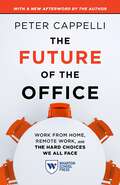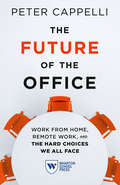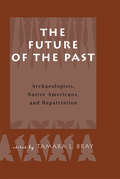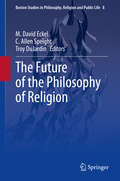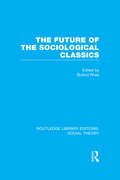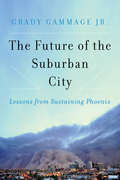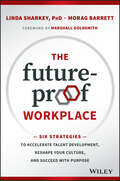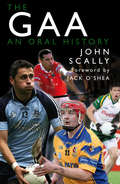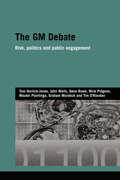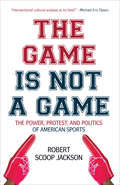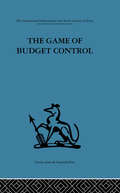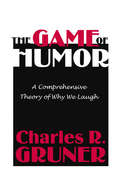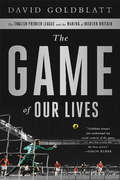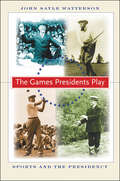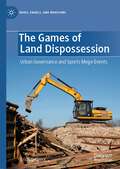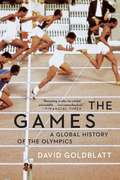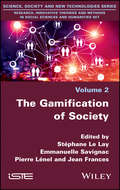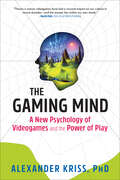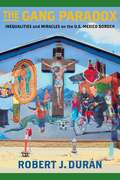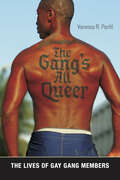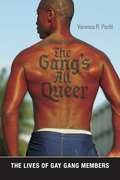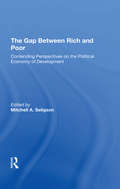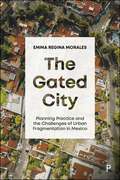- Table View
- List View
The Future of the Office, with a New Afterword by the Author: Work from Home, Remote Work, and the Hard Choices We All Face
by Peter CappelliA GLOBE & MAIL BEST BUSINESS BOOK OF 2021Now with an updated introduction and a new afterword by the authorThe COVID-19 pandemic forced an unprecedented experiment that reshaped white-collar work and turned remote work into a kind of “new normal.” A little over a year into the pandemic, with vaccines more widely available, employers began to think about bringing employees back to the office. Both employers and employees had great trepidation about what the future held.Into this fraught moment stepped Wharton professor Peter Cappelli with The Future of the Office, which provided employers and employees with guidance as they faced urgent decisions with limited information. Cappelli’s insights have proven remarkably prophetic and provide valuable insights for those wrestling with these issues today.In an updated introduction, Cappelli reminds readers where we were at that historical inflection point and what was at stake. He offers insight into what today’s readers can take away from the book and why the questions raised a year into the pandemic still apply today.In an all-new afterword, Cappelli shares what we have learned since the book first published. Employers, he says, have failed to grapple with the hardest challenges about remote work and remain in a state of indecision, often prioritizing financial results over employee well-being. Employees want to keep remote work in the mix, but evidence shows that these arrangements are not working as well as the in-person alternative.He offers insights that have the potential to positively transform the way we work. But he cautions that the challenges—and our questions about what works—are sure to linger for a long time.Whether you’re an executive crafting company policy, a manager leading hybrid teams, or an employee navigating this shifting landscape, The Future of the Office provides a unique lens for understanding the pandemic’s impact on work and the strategic choices that lie ahead.
The Future of the Office: Work from Home, Remote Work, and the Hard Choices We All Face
by Peter CappelliThe COVID-19 pandemic forced an unprecedented experiment that reshaped white-collar work and turned remote work into a kind of "new normal." Now comes the hard part.Many employees want to continue that normal and keep working remotely, and most at least want the ability to work occasionally from home. But for employers, the benefits of employees working from home or hybrid approaches are not so obvious. What should both groups do?In a prescient new book, The Future of the Office: Work from Home, Remote Work, and the Hard Choices We All Face, Wharton professor Peter Cappelli lays out the facts in an effort to provide both employees and employers with a vision of their futures. Cappelli unveils the surprising tradeoffs both may have to accept to get what they want. Cappelli illustrates the challenges we face in drawing lessons from the pandemic and deciding what to do moving forward. Do we allow some workers to be permanently remote? Do we let others choose when to work from home? Do we get rid of their offices? What else has to change, depending on the approach we choose?His research reveals there is no consensus among business leaders. Even the most high-profile and forward-thinking companies are taking divergent approaches:FacebookTwitter, and other tech companies say many employees can work remotely on a permanent basis.Goldman SachsJP Morgan, and others say it is important for everyone to come back to the office.Ford is redoing its office space so that most employees can work from home at least part of the time, andGM is planning to let local managers work out arrangements on an ad-hoc basis.As Cappelli examines, earlier research on other types of remote work, including telecommuting offers some guidance as to what to expect when some people will be in the office and others work at home, and also what happened when employers tried to take back offices. Neither worked as expected.In a call to action for both employers and employees, Cappelli explores how we should think about the choices going forward as well as who wins and who loses. As he implores, we have to choose soon.
The Future of the Past: Archaeologists, Native Americans and Repatriation
by Tamara BrayTo date, the notion of repatriation has been formulated as a highly polarized debate with museums, archaeologists, and anthropologists on one side, and Native Americans on the other. This volume offers both a retrospective and a prospective look at the topic of repatriation. By juxtaposing the divergent views of native peoples, anthropologists, museum professionals, and members of the legal profession, it illustrates the complexity of the repatriation issue.
The Future of the Philosophy of Religion (Boston Studies in Philosophy, Religion and Public Life #8)
by C. Allen Speight M. David Eckel Troy DuJardinThis collection of essays on the philosophy of religion and its future brings together accomplished thinkers across several related fields, from comparative philosophy to analytic and continental philosophy of religion and beyond. Contributing authors address pressing questions including: Where does philosophy stand in relation to religion and the study of religion in the 21st century? How ought the philosophy of religion to interact with religious studies and theology to make for fruitful interdisciplinary engagement? And what does philosophy uniquely have to offer to the broad discourse on religion in the modern world? Through exploring these questions and more, the authors’ goal is not that of meeting the philosophical future, but of forging it. Readers will enter a vivid conversation through engaging essays which demonstrate the importance of disciplinary openness and show that we do not need to sacrifice depth in order to achieve breadth. Modernity and postmodernity come together in a constantly evolving discussion that moves the philosophy of religion forward, while keeping an eye toward the experience accumulated in past centuries. This book will interest students of philosophy, theology, religious studies, and other fields that wonder about the place of philosophy and religion in today’s world. It also has much to offer advanced scholars in these fields, through its breadth and forward thinking.
The Future of the Sociological Classics (Routledge Library Editions: Social Theory Ser.)
by Buford RheaIn this important volume of specially commissioned essays, nine leading sociologists present their answers to the question, 'What use are the sociological classics today?' They report on the latest scholarship, on neglected features of the various masters, on promising applications and unrecognised implications.
The Future of the Suburban City: Lessons from Sustaining Phoenix
by Grady GammageThere exists a category of American cities in which the line between suburban and urban is almost impossible to locate. These suburban cities arose in the last half of twentieth-century America, based largely on the success of the single-family home, shopping centers, and the automobile. The low-density, auto-centric development of suburban cities, which are largely in the arid West, presents challenges for urban sustainability as it is traditionally measured. Yet, some of these cities--Los Angeles, Las Vegas, Phoenix, Salt Lake, Dallas, Tucson, San Bernardino, and San Diego--continue to be among the fastest growing places in the United States. In The Future of the Suburban City, Phoenix native Grady Gammage, Jr. looks at the promise of the suburban city as well as the challenges. He argues that places that grew up based on the automobile and the single-family home need to dramatically change and evolve. But suburban cities have some advantages in an era of climate change, and many suburban cities are already making strides in increasing their resilience. Gammage focuses on the story of Phoenix, which shows the power of collective action -- government action -- to confront the challenges of geography and respond through public policy. He takes a fresh look at what it means to be sustainable and examines issues facing most suburban cities around water supply, heat, transportation, housing, density, urban form, jobs, economics, and politics. The Future of the Suburban City is a realistic yet hopeful story of what is possible for any suburban city.
The Future-Proof Workplace: Six Strategies to Accelerate Talent Development, Reshape Your Culture, and Succeed with Purpose
by Marshall Goldsmith Linda Sharkey Morag BarrettFace the future on the crest of the wave while the rest are pulled under The Future-Proof Workplace is a survival guide for the new realities of business. The future is no longer some far-off destination; it is here, right now, and already changing the way we work. Historically, the sea-changes have advanced humanity and inspired us to reach even further; from the Dark Ages to the Age of Enlightenment, from agrarian to industrial societies—and today is no different. But only those who are ready for the changes will come out thriving. This book highlights the changes already taking place around us: the transition from skills to knowledge, the neuroscience approach to leadership and motivation, galloping technical advances, and more. Whether you're a CEO, a leader or manager, or just trying to survive the chaos, this invaluable guide is your wake-up call—the future is now. The new forces emerging must be understood now if your organization is to succeed. This book details the transformation every business must make to turn upheaval into opportunity. Discover how emerging technologies and neuroscience research are already impacting the way we work Learn how yesterday's biases are being replaced by modern values, culture, and relationships Consider the "heart" of your organization, and whether it can stand up to the purpose-driven paradigm of the future Find new achievement in the new organizational structure, and examine models that are already emerging Everyone knows that changes are needed—and fast. The question is: which changes, and how? The Future-Proof Workplace maps the transformation, and gives you an itinerary for each step of the way.
The Future: Six Drivers of Global Change
by Al GoreFrom the former vice president and #1 New York Times bestselling author comes An Inconvenient Truth for everything--a frank and clear-eyed assessment of six critical drivers of global change in the decades to come. Ours is a time of revolutionary change that has no precedent in history. With the same passion he brought to the challenge of climate change, and with his decades of experience on the front lines of global policy, Al Gore surveys our planet's beclouded horizon and offers a sober, learned, and ultimately hopeful forecast in the visionary tradition of Alvin Toffler's Future Shock and John Naisbitt's Megatrends. In The Future, Gore identifies the emerging forces that are reshaping our world: * Ever-increasing economic globalization has led to the emergence of what he labels "Earth Inc."--an integrated holistic entity with a new and different relationship to capital, labor, consumer markets, and national governments than in the past. * The worldwide digital communications, Internet, and computer revolutions have led to the emergence of "the Global Mind," which links the thoughts and feelings of billions of people and connects intelligent machines, robots, ubiquitous sensors, and databases. * The balance of global political, economic, and military power is shifting more profoundly than at any time in the last five hundred years--from a U.S.-centered system to one with multiple emerging centers of power, from nation-states to private actors, and from political systems to markets. * A deeply flawed economic compass is leading us to unsustainable growth in consumption, pollution flows, and depletion of the planet's strategic resources of topsoil, freshwater, and living species. * Genomic, biotechnology, neuroscience, and life sciences revolutions are radically transforming the fields of medicine, agriculture, and molecular science--and are putting control of evolution in human hands. * There has been a radical disruption of the relationship between human beings and the earth's ecosystems, along with the beginning of a revolutionary transformation of energy systems, agriculture, transportation, and construction worldwide. From his earliest days in public life, Al Gore has been warning us of the promise and peril of emergent truths--no matter how "inconvenient" they may seem to be. As absorbing as it is visionary, The Future is a map of the world to come, from a man who has looked ahead before and been proven all too right.
The GAA: An Oral History
by John ScallyFor 125 years, the GAA has been a fixed point in a fast-changing age, and this oral history marks the125th anniversary of the Association. It is the story of the GAA as seen through the eyes of those key personalities who shaped it. Author Jon Scally has carried out over a hundred revealing interviews with players and managers who are synonymous with the Games, including Babs Keating, Jimmy Barry-Murphy, Ger Loughnane, D.J. Carey, Liam Griffin, Mick O'Dwyer, Colm O'Rourke, John O'Mahony, Joe Brolly and Matt Connor, and these contributions offer a unique eyewitness testimony to the dramas that captivated, enthralled and occasionally infuriated the nation both on and off the pitch. The book sheds new light on high-profile controversies, offers new insights into the players and personalities that linger long in the memory and presents a fresh look at the epic contests that turned Ireland's Games into a national soap opera.The GAA: An Oral History is a celebration of the good, the bad and the beautiful of Gaelic Games, and is a must for all sports fans.
The GM Debate: Risk, Politics and Public Engagement (Genetics and Society)
by Graham Murdock Tim O'Riordan Tom Horlick-Jones John Walls Gene Rowe Nick Pidgeon Wouter PoortingaThis book tells the story of an unprecedented experiment in public participation: the government-sponsored debate on the possible commercialization of ‘GM’ crops in the UK. Giving a unique and systematic account of the debate process, this revealing volume sets it within its political and intellectual contexts, and examines the practical implications for future public engagement initiatives. The authors, an experienced team of researchers, produce a conceptually-informed and empirically-based evaluation of the debate, drawing upon detailed observation of both public and behind-the-scenes aspects of the process, the views of participants in debate events, a major MORI-administered survey of public views, and details of media coverage. With innovative methodological work on the evaluation of public engagement and deliberative processes, the authors analyze the design, implementation and effectiveness of the debate process, and provide a critique of its official findings. The book will undoubtedly be of interest to a wide readership, and will be an invaluable resource for researchers, policy-makers and students concerned with cross-disciplinary aspects of risk, decision-making, public engagement, and governance of technology.
The Game is Not a Game: The Power, Protest, and Politics of American Sports
by Robert Scoop JacksonA study of &“the hypocrisy of the game, capitalism, activism (a la Kaepernick), disrespect to female athletes, and who benefits from sports the most&” (Electric Lit). Part play-by-play, part op-ed, The Game Is Not a Game is an illuminating and unflinching examination of the good and evil in the sports industry. Liberating and provocative, with sharp wit and generous humor, Jackson&’s essays explore the role that sports plays in American society and the hypocritical standards by which the athletes are often judged. The Game Is Not a Game is distinctly intended to challenge accepted ideology and to push the boundaries of mainstream sports media beyond the comfort zone. Chapters expose &“Our Miseducation of LeBron James,&” &“#ThemToo: The UnRespected Worth of the Woman Athlete,&” the duplicity of the NFL in its treatment of Colin Kaepernick and the anthem protests, the cultural bias of analytics, and the power of social activism versus the power and politics of professional sports ownership—all from the sharp, savvy, and self-critical perspective of one of the leading voices for social justice in sports media. &“Bristles with bracing and brutal insights that take no tea for the fever and offer no discount on truth or justice . . . an instant classic that reckons with the factors that make sports possible, and at the same time wrestles with the forces that make protest in sports necessary. The Game Is Not a Game is intersectional cultural analysis at its best!&” —Michael Eric Dyson, New York Times bestselling author &“Jackson&’s work is not about scores; rather, he stresses that sports are a self-contained microcosm of society at large. A thought-provoking, unfailingly insightful book.&” —Booklist
The Game of Budget Control
by G H HofstedeTavistock Press was established as a co-operative venture between the Tavistock Institute and Routledge & Kegan Paul (RKP) in the 1950s to produce a series of major contributions across the social sciences. This volume is part of a 2001 reissue of a selection of those important works which have since gone out of print, or are difficult to locate. Published by Routledge, 112 volumes in total are being brought together under the name The International Behavioural and Social Sciences Library: Classics from the Tavistock Press. Reproduced here in facsimile, this volume was originally published in 1968 and is available individually. The collection is also available in a number of themed mini-sets of between 5 and 13 volumes, or as a complete collection.
The Game of Humor: A Comprehensive Theory of Why We Laugh
by Charles R. GrunerHumor, wit, and laughter surround each person. From everyday quips to the carefully contrived comedy of literature, newspapers, and television we experience humor in many forms, yet the impetus for our laughter is far from innocuous. Misfortune, stupidity, and moral or cultural defects, however faintly revealed in others and ourselves, seem to make us laugh. Although discomforting, such negative terms as superiority, aggression, hostility, ridicule, or degradation can be applied to instances of humor. According to scholars, Thomas Hobbes's "superiority theory" that humor arises from mischances, infirmities, and indecencies, where there is no wit at all applies to most humor. With the exception of good-natured play, Charles R. Gruner claims that humor is rarely as innocent as it first appears.Gruner's proposed superiority theory of humor is all-encompassing. In The Game of Humor, he expands the scope of Hobbes's theory to include and explore the contest aspect of "good-natured" play. As such, the author believes all instances of humor can be examined as games, in terms of competition and keeping score winners and losers. Gruner draws on a broad spectrum of thought-provoking examples. Holocaust jokes, sexual humor, the racialist dialogue of such comic characters as Stepin Fetchit and Archie Bunker, simple puns, and many of the author's own encounters with everyday humor. Gruner challenges the reader to offer a single example of humor that cannot be "de-humorized" by its agonistic nature.The Game of Humor makes intriguing and enjoyable reading for people interested in humor and the aspects of human motivation. This book will also be valuable to professionals in communication and information studies, sociologists, literary critics and linguists, and psychologists concerned with the conflicts and tensions of everyday life.
The Game of Our Lives: The English Premier League And The Making Of Modern Britain
by David GoldblattThe Game of Our Lives is a masterly portrait of contemporary Britain through the lens of soccer. In the last two decades soccer in the United Kingdom has made the transition from a peripheral dying sport to the very center of British popular culture, from an economic basket-case to a booming entertainment industry that has conquered the world. What does it mean when soccer becomes so central to the private and public lives of the British people? Has it enriched this island nation or impoverished it? From the goals, to the players, to the managers, to the money, David Goldblatt describes how the English Premier League was forged by Margaret Thatcher's Britain and an alliance of the big clubs - Arsenal, Liverpool, Manchester United, Chelsea, Tottenham Hotspur - the Football Association and Rupert Murdoch's Sky TV. He identifies the real winners and losers in this extraordinary period, and explains how soccer has closely mirrored the wider political and social scene. Goldblatt argues that no social phenomenon tracks the momentous economic, social and political changes of post-Thatcherite Britain in a more illuminating manner than soccer, and The Game of Our Lives provides the definitive social history of the EPL - most popular soccer league in the world.
The Games Presidents Play: Sports and the Presidency
by John Sayle WattersonThis look at the connections between sportsmanship and statesmanship “introduces an intriguing way of evaluating presidential fitness for office” (Richmond Times-Dispatch).Whether throwing out the first pitch of the baseball season, fishing for trout, or cheating at golf, American presidents through history have had connections to the world of sports in many ways. This book explores how various commanders-in-chief worked and played—and how their athletic activities reflected their political identities.The author considers George Washington, whose athleticism contributed to his success on the battlefield and perhaps to the birth of the republic. He moves into the nineteenth century, when frontier sports were part of the formative years of Jackson, Lincoln, and Cleveland. With twentieth-century presidents—most notably the hyperactive, headline-grabbing Teddy Roosevelt—he shows how the growth of mass media and transportation transformed presidential sports into both a form of recreation and a means of establishing a positive image. Exploring everything from FDR’s fight to restore his polio-ravaged body to Eisenhower’s obsessive love affair with golf to Nixon’s enthusiasm for football, this book uses sports to open a window onto the presidency and the nation’s culture, as well as the strengths, weaknesses, and personalities of America’s leaders.“Watterson’s history rises above trivia in its attention to the political ramifications of presidents’ sports while also being a consistently entertaining trove of lore and, as the author puts it, ‘just weird stuff,’ such as John Q. Adams granting an interview while skinny-dipping. A wry and perceptive work.” —Booklist “An enjoyable study of politics and culture.” —Publishers Weekly“Will appeal to history buffs and sports fans alike.” —Library Journal
The Games of Land Dispossession: Urban Governance and Sports Mega-Events (Marx, Engels, and Marxisms)
by Erick OmenaThis book offers a comparative study of state strategies in relation to urban redevelopment projects associated with sports mega-events in Brazil, South Africa and the United Kingdom. It examines urban governance strategies employed to dispossess working-class communities of their land and counteract the subsequent emergence of discontent in various national contexts, offering an intricate analysis of the mechanisms of class dominance operating across diverse regions of the globe. This is based on the application of Gramscian theory concerning the capitalist state and its fluid interplay between coercion and consent. Juxtaposing historical trajectories in the execution of redevelopment initiatives linked to large-scale sporting events, the book offers an in-depth examination of the state-civil society relations shaping the London 2012 and Rio 2016 Olympic Parks, alongside the regeneration initiatives concerning the Maracanã stadium in Rio de Janeiro and the Ellis Park stadium in Johannesburg – respectively earmarked for the 2014 and 2010 FIFA World Cups. Drawing on insights from a range of disciplines and an explicitly Gramscian analytical framework, this book will appeal to students and scholars in urban planning, sport sociology, development studies, and human geography.
The Games: A Global History of the Olympics
by David GoldblattThe definitive sports and social history of the modern Olympic Games--by one of the most celebrated sportswriters of our time.Renowned sportswriter David Goldblatt has been hailed by the Wall Street Journal for writing "with the expansive eye of a social and cultural critic" In The Games Goldblatt delivers a magisterial history of the biggest sporting event of them all: the Olympics. He tells the epic story of the Games from their reinvention in Athens in 1896 to the present day, chronicling classic moments of sporting achievement from Jesse Owens to Nadia Comăneci, the Miracle on Ice to Usain Bolt. He goes beyond the medal counts to explore how international conflicts have played out at the Olympics, including the role of the Games in Fascist Germany and Italy, the Cold War, and the struggles of the postcolonial world for recognition. He also tells the extraordinary story of how women fought to be included on equal terms, how the Paralympics started in the wake of World War II, and how the Olympics reflect changing attitudes to race and ethnicity.
The Gamification of Society
by Emmanuelle Savignac Jean Frances Pierre Lénel Stéphane Le LayThe applications of gamification and the contexts in which game elements can be successfully incorporated have grown significantly over the years. They now include the fields of health, education, work, the media and many others. However, the human and social sciences still neglect the analysis and critique of gamification. Research conducted in this area tends to focus on game objects and not gamification's logic as its ideological dimension. Considering that the game, as a model and a reference, laden with social value, deserves to be questioned beyond its objects, The Gamification of Society gathers together texts, observations and criticisms that question the influence that games and their "mechanics" have on wider society. The empirical research presented in this book (examining designers' practices, early childhood, political action, the quantified self, etc.) also probes several different national contexts – those of Norway, Belgium, the United States and France, among others.
The Gaming Mind: A New Psychology of Videogames and the Power of Play
by Alexander KrissAre videogames bad for us? It’s the question on everyone’s mind, given teenagers’ captive attention to videogames and the media’s tendency to scapegoat them. It’s also—if you ask clinical psychologist Alexander Kriss—the wrong question. In his therapy office, Kriss looks at videogames as a window into the mind. Is his patient Liz really “addicted” to Candy Crush—or is she evading a deeper problem? Why would aspiring model Patricia craft a hideous avatar named “Pat”? And when Jack immerses himself in Mass Effect, is he eroding his social skills—or honing them via relationship-building gameplay? Weaving together Kriss’s personal history, patients’ experiences, and professional insight—and without shying away from complex subjects, such as online harassment—The Gaming Mind disrupts our assumptions about “gamers” and explores how gaming can be good for us. It offers guidance for parents, clinicians, and the rest of us to better understand the gaming mind. Like any mode of play, at their best, videogames reveal who we are—and what we want from our lives.
The Gang Paradox: Inequalities and Miracles on the U.S.-Mexico Border (Studies in Transgression)
by Robert J. DuránThe areas along the U.S.-Mexico border are commonly portrayed as a hot spot for gang activity, drug trafficking, and violence. Yet when Robert J. Durán conducted almost a decade’s worth of ethnographic research in border towns between El Paso, Texas, and southern New Mexico—a region notorious for gang activity, according to federal officials—he found significantly less gang membership and activity than common fearmongering claims would have us believe. Instead, he witnessed how the gang label was used to criminalize youth of Mexican descent—to justify the overrepresentation of Latinos in the justice system, the implementation of punitive practices in the school system, and the request for additional resources by law enforcement.In The Gang Paradox, Durán analyzes the impact of deportation, incarceration, and racialized perceptions of criminality on Latino families and youth along the border. He draws on ethnography, archival research, official data sources, and interviews with practitioners and community members to present a compelling portrait of Latino residents’ struggles amid deep structural disadvantages. Durán, himself a former gang member, offers keen insights into youth experience with schools, juvenile probation, and law enforcement. The Gang Paradox is a powerful community study that sheds new light on intertwined criminalization and racialization, with policy relevance toward issues of gangs, juvenile delinquency, and the lack of resources in border regions.
The Gang's All Queer: The Lives of Gay Gang Members (Alternative Criminology #9)
by Vanessa R. PanfilHonorable Mention, 2018 Distinguished Book Award presented by the American Sociological Association’s Sociology of Sexualities SectionThe first inside look at gay gang members.Many people believe that gangs are made up of violent thugs who are in and out of jail, and who are hyper-masculine and heterosexual. In The Gang’s All Queer, Vanessa Panfil introduces us to a different world. Meet gay gang members – sometimes referred to in popular culture as “homo thugs” – whose gay identity complicates criminology’s portrayal and representation of gangs, gang members, and gang life. In vivid detail, Panfil provides an in-depth understanding of how gay gang members construct and negotiate both masculine and gay identities through crime and gang membership. The Gang’s All Queer draws from interviews with over 50 gay gang- and crime-involved young men in Columbus, Ohio, the majority of whom are men of color in their late teens and early twenties, as well as on-the-ground ethnographic fieldwork with men who are in gay, hybrid, and straight gangs. Panfil provides an eye-opening portrait of how even members of straight gangs are connected to a same-sex oriented underground world. Most of these young men still present a traditionally masculine persona and voice deeply-held affection for their fellow gang members. They also fight with their enemies, many of whom are in rival gay gangs. Most come from impoverished, ‘rough’ neighborhoods, and seek to defy negative stereotypes of gay and Black men as deadbeats, though sometimes through illegal activity. Some are still closeted to their fellow gang members and families, yet others fight to defend members of the gay community, even those who they deem to be “fags,” despite distaste for these flamboyant members of the community. And some perform in drag shows or sell sex to survive. The Gang’s All Queer poignantly illustrates how these men both respond to and resist societal marginalization. Timely, powerful, and engaging, this book will challenge us to think differently about gangs, gay men, and urban life.
The Gang's all Queer: The Lives of Gay Gang Members
by Vanessa R. PanfilThe first inside look at gay gang members. Many people believe that gangs are made up of violent thugs who are in and out of jail, and who are hyper-masculine and heterosexual. In The Gang's All Queer, Vanessa Panfil introduces us to a different world. Meet gay gang members - sometimes referred to in popular culture as "homo thugs" - whose gay identity complicates criminology's portrayal and representation of gangs, gang members, and gang life. In vivid detail, Panfil provides an in-depth understanding of how gay gang members construct and negotiate both masculine and gay identities through crime and gang membership. The Gang's All Queer draws from interviews with over 50 gay gang- and crime-involved young men in Columbus, Ohio, the majority of whom are men of color in their late teens and early twenties, as well as on-the-ground ethnographic fieldwork with men who are in gay, hybrid, and straight gangs. Panfil provides an eye-opening portrait of how even members of straight gangs are connected to a same-sex oriented underground world. Most of these young men still present a traditionally masculine persona and voice deeply-held affection for their fellow gang members. They also fight with their enemies, many of whom are in rival gay gangs. Most come from impoverished, 'rough' neighborhoods, and seek to defy negative stereotypes of gay and Black men as deadbeats, though sometimes through illegal activity. Some are still closeted to their fellow gang members and families, yet others fight to defend members of the gay community, even those who they deem to be "fags," despite distaste for these flamboyant members of the community. And some perform in drag shows or sell sex to survive. The Gang's All Queer poignantly illustrates how these men both respond to and resist societal marginalization. Timely, powerful, and engaging, this book will challenge us to think differently about gangs, gay men, and urban life.
The Ganges: Cultural, Economic and Environmental Significance (Springer Geography)
by Vishwambhar Prasad Sati‘The Ganges: Cultural, Economic, and Environmental Importance’ is a geographical, cultural, economic, and environmental interpretation of the Ganga River. The Ganga River originates from Gaumukh- situated in the high Himalaya, flows through the world’s biggest fertile alluvial plain, and inlets into the Bay of Bengal at Ganga Sagar. It makes a unique natural and cultural landscape and is believed to be the holiest river of India. The Hindus called it ‘Mother Ganga’ and worship it. The towns/cities, situated on its bank, are world-famous and are known as the highland and valley pilgrimages. The water of the Ganga is pious, and the Hindus use it on different occasions while performing the rituals and customs. This book is unique because no previous study which presents a complete and comprehensive geographical description of the Ganga has been composed. This book presents the historical and cultural significance of the Ganga and its tributaries. Empirical, archival, and observation methods were applied to conduct this study. There are a total of 10 chapters in this book such as ‘Introduction’, ‘the Ganga Basin’, ‘Geography of the Ganga Basin’, ‘the Ganges System: Ganga and its Tributaries’, ‘Ganga between Gaumukh and Uttarkashi’, ‘the Major Cultural Towns’, ‘Major Fairs and Festivals’, ‘Economic Significance of the Ganga’, ‘Environmental Issues’, and ‘Conclusions’. The contents of the book are enriched by 89 figures, 15 tables, and substantial citations and references.
The Gap Between Rich And Poor: Contending Perspectives On The Political Economy Of Development
by Mitchell A SeligsonIncreasing concern has been expressed by Third World leaders and international organizations alike over the growing gap between rich and poor nations. Between 1950 and 1980 alone, the per capita income gap between low-income and industrialized countries grew from $3,677 to $9,648. In addition, within the developing nations themselves, an ever-widening gap separates the rich from the poor. Other evidence suggests that middle-income countries may be gaining on the rich countries. Some research shows that the gap in education and health is narrowing rather rapidly, and studies of domestic inequality have revealed that growth with equity has occurred in a number of developing nations that have committed themselves to such a policy. This volume presents the evidence for both sides of the debate. It begins by stating the conventional wisdom–that international and internal gaps are widening–and goes on to examine the major explanations offered, which focus on culture, urban bias, dependency, and world-system analysis. The book then presents empirical studies on the existence and causes of the gap, as well as key case studies that challenge the conventional wisdom. Unique in its objectivity, this text does not seek to serve either side of the debate, but instead draws upon the best research in the field to highlight major issues and to present studies that have subjected the differing perspectives to rigorous empirical analysis. It will prove especially useful in courses on Third World development, political economy, comparative politics, development economics, the sociology of development, and related topics.
The Gated City: Planning Practice and the Challenges of Urban Fragmentation in Mexico
by Emma Regina MoralesThe book tells the story of the proliferation of gated communities and the privatisation of public life and public space in Mexico over the last three decades. Drawing on research from Lomas de Angelópolis in Puebla, one of the largest gated communities in the world, Emma Regina Morales explores why such fortified spaces have proved popular with middle-class households. Weaving together the multiple influences of housing policy, predatory financial markets, and an increased fear of crime, the book sets out how policy makers and planners can improve decision-making and provide non-gated solutions to urban anxiety.
